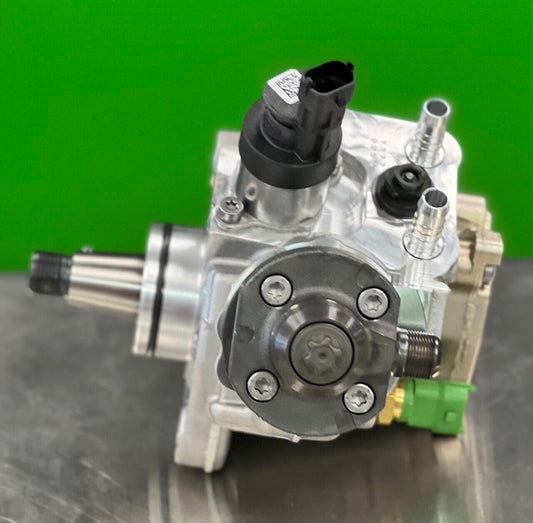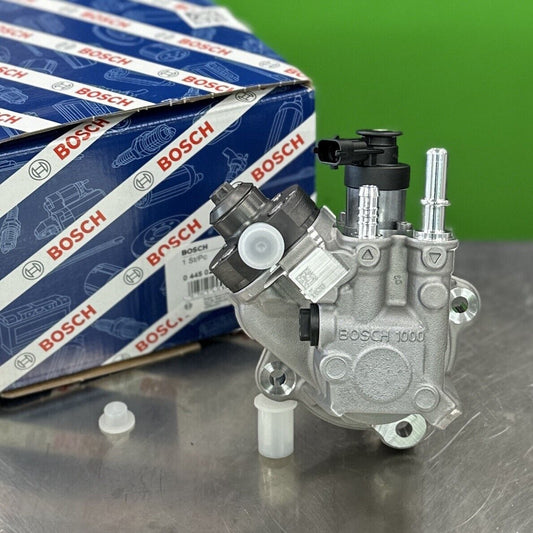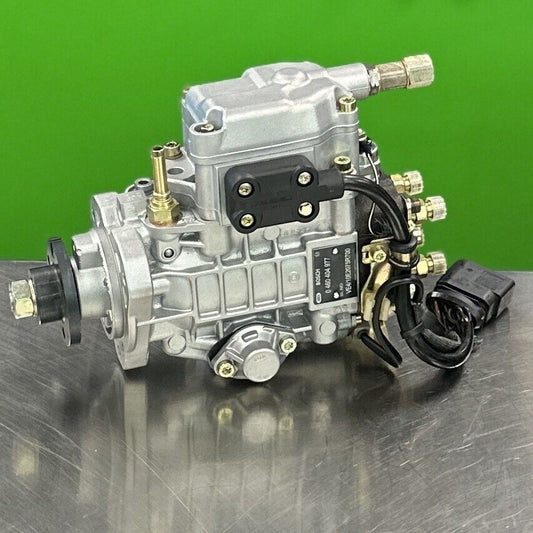Diesel Engine Reliability in Alaska’s Extreme Weather
Alaska's extreme weather poses unique challenges for maintaining the reliability of diesel engines in the region. The frigid temperatures, heavy snowfall, and icy conditions can significantly impact the performance and longevity of these vital engines. To combat these challenges, a combination of strategic measures and specialized technologies are employed to ensure that diesel engines in Alaska continue to function optimally, even in the harshest conditions.
Impact of Cold Temperatures
The impact of cold temperatures on diesel engines in Alaska is profound and poses significant challenges to their reliability and performance. The extreme cold weather conditions experienced in the state can cause various issues for diesel engines, affecting their functionality and longevity. When temperatures plummet, diesel fuel can thicken, leading to problems with fuel flow and combustion efficiency. This can result in difficulties starting the engine, reduced power output, and potential damage to engine components due to increased strain.
Moreover, the cold weather can also impact the lubrication of engine parts, causing oil to thicken and flow less freely. In such conditions, the risk of wear and tear on engine components increases, potentially leading to malfunctions and breakdowns. The cold temperatures can also affect the battery performance, reducing its efficiency and making it harder to start the engine. These combined effects of cold weather highlight the critical need for proactive measures to ensure diesel engine reliability in Alaska.
To mitigate the negative impact of cold temperatures on diesel engines, various strategies can be implemented. One effective solution is the use of block heaters, which help preheat the engine and maintain optimal operating temperatures, ensuring easier starts and smoother performance in cold weather. Additionally, installing engine coolant heaters can prevent coolant from freezing, allowing the engine to reach operating temperature more quickly and reducing wear on components.
Furthermore, using winter-grade diesel fuel that contains anti-gelling additives can prevent fuel from solidifying in cold temperatures, maintaining proper fuel flow and combustion. Regularly monitoring and maintaining the engine's fuel and oil systems are crucial in cold weather to prevent issues such as fuel line freezing or oil thickening, which can compromise engine performance.
In conclusion, the impact of cold temperatures on diesel engines in Alaska is significant, requiring proactive measures to ensure their reliability and longevity. By understanding the challenges posed by extreme weather conditions and implementing appropriate strategies such as preheating systems, winter-grade fuel, and consistent maintenance, diesel engines can continue to operate effectively even in the harshest of environments.
Importance of Regular Maintenance
Regular maintenance is the backbone of diesel engine reliability in Alaska's unforgiving weather conditions. In the face of extreme cold temperatures, heavy snowfall, and icy conditions, diesel engines are pushed to their limits, requiring diligent care and attention to ensure they continue to function optimally. Without consistent maintenance practices, these engines are susceptible to breakdowns and malfunctions, leaving operators stranded in remote locations without the means to combat the harsh environment.
By adhering to a strict maintenance schedule, operators can preemptively address potential issues before they escalate, safeguarding the engine's performance and longevity. Routine inspections, oil changes, filter replacements, and overall system checks are essential components of regular maintenance that help detect and rectify any anomalies or wear and tear that may compromise the engine's reliability.
Moreover, regular maintenance not only enhances the engine's performance but also contributes to cost savings in the long run. By investing in preventive maintenance measures, operators can avoid costly repairs and downtime that result from neglecting the engine's upkeep. It is akin to providing the engine with a shield against the harsh elements of Alaska's environment, ensuring it remains robust and resilient in the face of adversity.
Use of Cold-Weather Additives
When facing the challenges of extreme cold weather in Alaska, the use of cold-weather additives becomes paramount in ensuring the reliability and efficiency of diesel engines. These specialized additives are designed to withstand low temperatures and prevent common issues such as fuel gelling, which can impede engine performance. By incorporating cold-weather additives into diesel engines, operators can enhance fuel efficiency and overall reliability even in the harshest winter conditions.
One of the key benefits of cold-weather additives is their ability to lower the freezing point of diesel fuel, preventing it from solidifying in cold temperatures. This crucial function helps to maintain a consistent flow of fuel to the engine, reducing the risk of clogs or blockages that can disrupt operations. Additionally, these additives contain anti-gelling properties that ensure the fuel remains in a liquid state, avoiding potential damage to the engine components.
Moreover, cold-weather additives also offer lubrication properties that help protect the engine's vital parts from wear and tear caused by cold starts and harsh conditions. By reducing friction and improving lubrication, these additives contribute to extending the lifespan of the engine and minimizing maintenance requirements, ultimately leading to cost savings for operators.
Operators in Alaska rely on cold-weather additives as a proactive measure to safeguard their diesel engines against the detrimental effects of extreme cold. By incorporating these additives into their maintenance routines, they can ensure that their engines perform optimally, even when faced with sub-zero temperatures and challenging weather conditions. The use of cold-weather additives is not just a recommendation but a necessity for maintaining the reliability and longevity of diesel engines in Alaska's harsh environment.
Remote Monitoring Technology
Remote monitoring technology plays a crucial role in ensuring the reliability and performance of diesel engines in the extreme weather conditions of Alaska. By utilizing advanced monitoring systems, operators can track the engine's vital parameters in real-time, allowing them to detect any anomalies or potential issues promptly. This proactive approach enables maintenance personnel to address problems before they escalate, minimizing downtime and costly repairs.
One significant benefit of remote monitoring technology is its ability to provide insights into the engine's operational efficiency and performance trends over time. By analyzing this data, operators can optimize the engine's settings and maintenance schedules to enhance overall reliability and longevity. Additionally, remote monitoring technology allows for predictive maintenance, where maintenance tasks are performed based on actual engine condition rather than fixed schedules, leading to cost savings and improved uptime.
Furthermore, remote monitoring technology offers the convenience of accessing engine data from anywhere, making it especially valuable in Alaska's remote locations where on-site supervision may be limited. This capability enables operators and maintenance personnel to monitor multiple engines across various sites simultaneously, ensuring comprehensive oversight and timely intervention when needed.
In addition to monitoring engine performance, remote monitoring technology can also facilitate remote diagnostics and troubleshooting. Maintenance personnel can remotely access engine data, diagnose issues, and even perform certain maintenance tasks without being physically present at the site. This not only saves time and resources but also reduces the need for frequent on-site visits, particularly in challenging weather conditions.
Overall, the integration of remote monitoring technology in diesel engine maintenance practices in Alaska is essential for ensuring operational efficiency, minimizing downtime, and maximizing engine reliability. By harnessing the power of real-time data monitoring and analysis, operators can proactively manage their engines, mitigate potential risks, and optimize performance in the face of Alaska's extreme weather challenges.
Training for Extreme Conditions
Training for extreme conditions in Alaska is crucial for ensuring the smooth operation and longevity of diesel engines in such harsh environments. Operators and maintenance personnel must undergo specialized training to effectively manage and troubleshoot diesel engines amidst the challenging weather conditions prevalent in the region. This training equips them with the necessary skills and knowledge to address issues promptly and efficiently, minimizing downtime and maximizing engine performance.
One key aspect of training for extreme conditions is understanding the unique challenges posed by Alaska's weather, including extreme cold temperatures, snow, and ice. Operators need to be familiar with the specific maintenance practices required to keep diesel engines running smoothly in such conditions. This includes regular inspections, monitoring fuel quality, and addressing any issues that may arise due to the weather.
Moreover, specialized training programs can educate personnel on the use of cold-weather additives and other preventive measures to enhance the reliability of diesel engines in extreme weather. By incorporating these additives into the maintenance routine, operators can prevent fuel gelling, improve fuel efficiency, and ensure optimal engine performance even in the coldest temperatures.
Furthermore, training for extreme conditions may also cover the utilization of remote monitoring technology to track diesel engine performance in real-time. This technology enables operators to detect any anomalies or potential issues promptly, allowing for proactive maintenance measures to be implemented. By embracing remote monitoring tools, operators can stay ahead of maintenance needs and prevent unexpected breakdowns in remote Alaskan locations.
In essence, training for extreme conditions is a cornerstone of diesel engine reliability in Alaska's harsh weather. It empowers operators and maintenance personnel with the skills and knowledge needed to overcome the challenges presented by the environment, ensuring that diesel engines continue to operate efficiently and effectively in even the most extreme conditions.
Frequently Asked Questions
-
How do cold temperatures impact diesel engine performance in Alaska?
Cold temperatures in Alaska can significantly affect diesel engine performance by causing fuel gelling, reduced battery efficiency, and increased wear on engine components. It is essential to implement cold-weather strategies to prevent these issues and ensure reliable operation.
-
What maintenance practices are crucial for diesel engines in extreme weather conditions?
Regular maintenance practices such as changing filters, checking fuel quality, inspecting coolant levels, and monitoring battery health are crucial for diesel engines in extreme weather conditions. These practices help prevent breakdowns and ensure optimal performance.
-
How do cold-weather additives benefit diesel engines in Alaska?
Cold-weather additives improve fuel flow, prevent fuel gelling, and enhance lubrication in diesel engines operating in Alaska's harsh climate. Using these additives can help maintain engine reliability and efficiency during cold weather.
-
What is the role of remote monitoring technology in managing diesel engines in remote Alaska locations?
Remote monitoring technology enables real-time tracking of diesel engine performance, allowing for proactive maintenance measures and early detection of potential issues. This technology is crucial for ensuring the reliability of diesel engines in remote Alaska locations.
-
Why is specialized training important for operators and maintenance personnel in Alaska's extreme conditions?
Specialized training equips operators and maintenance personnel with the knowledge and skills to effectively manage and troubleshoot diesel engines in Alaska's extreme conditions. Proper training is essential for ensuring the longevity and reliability of diesel engines in challenging environments.



